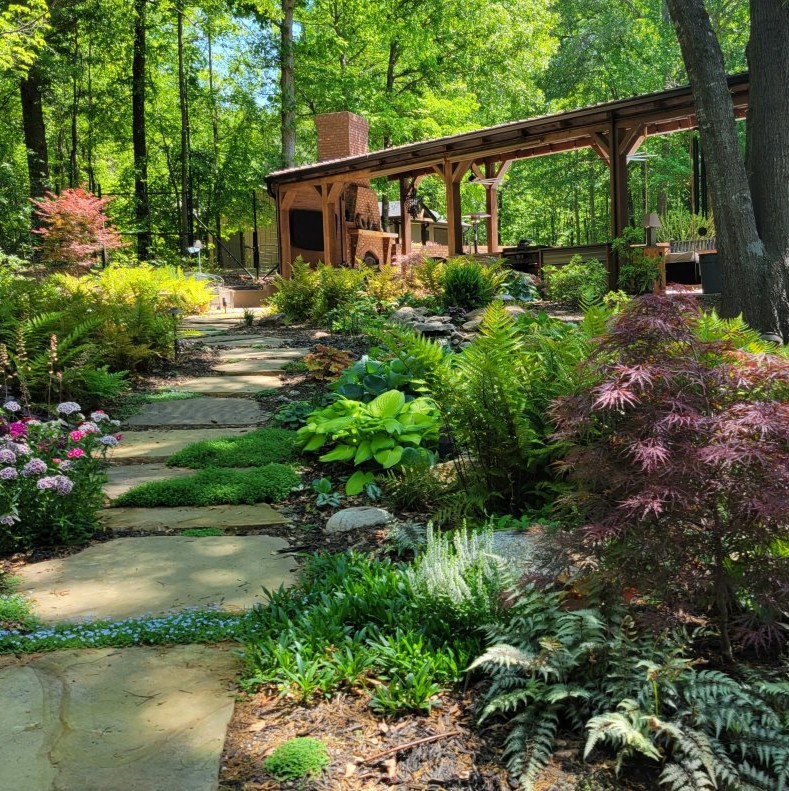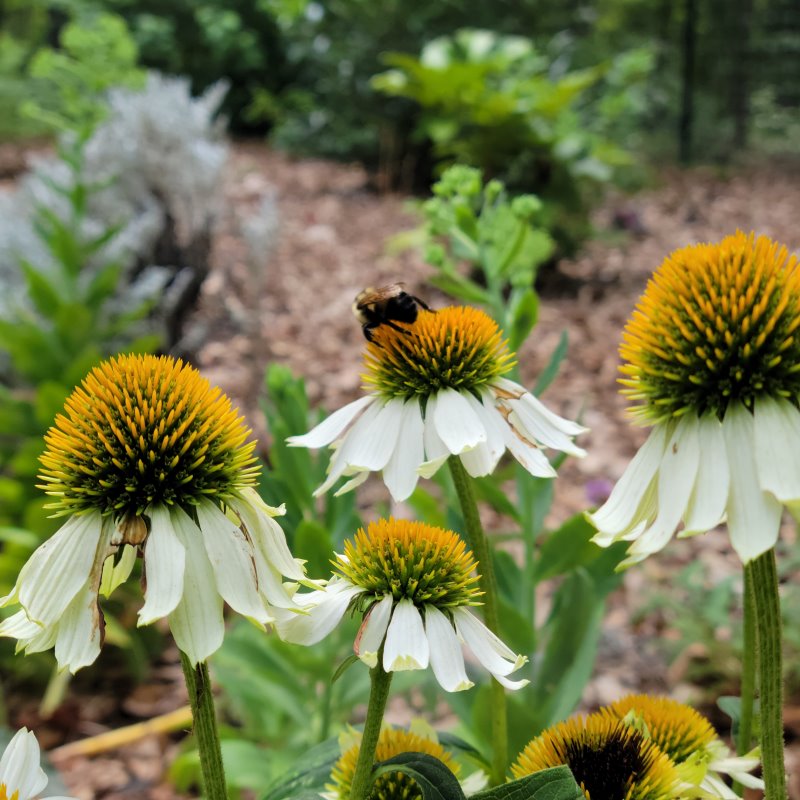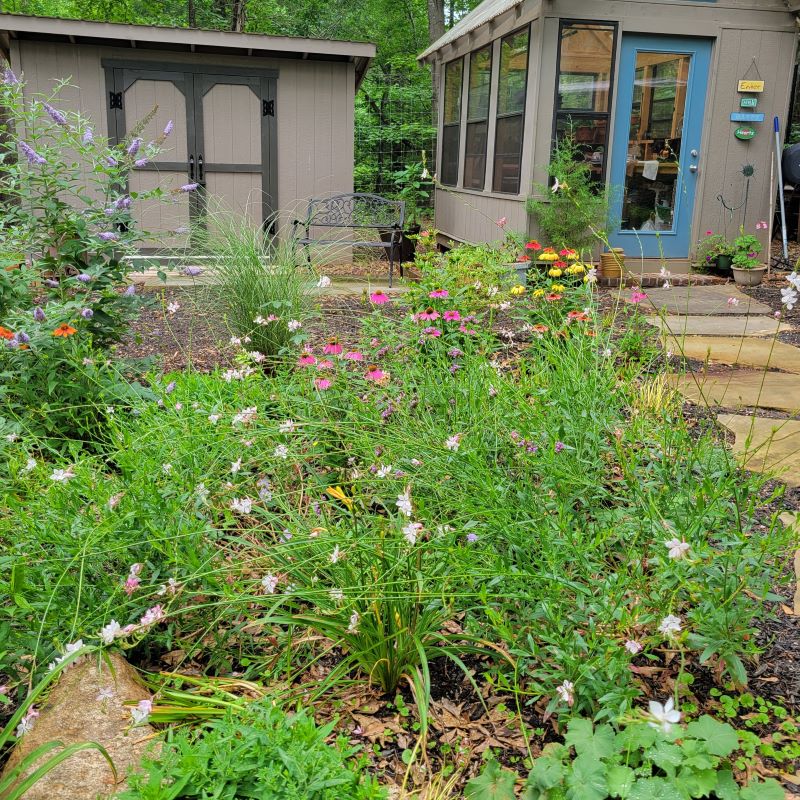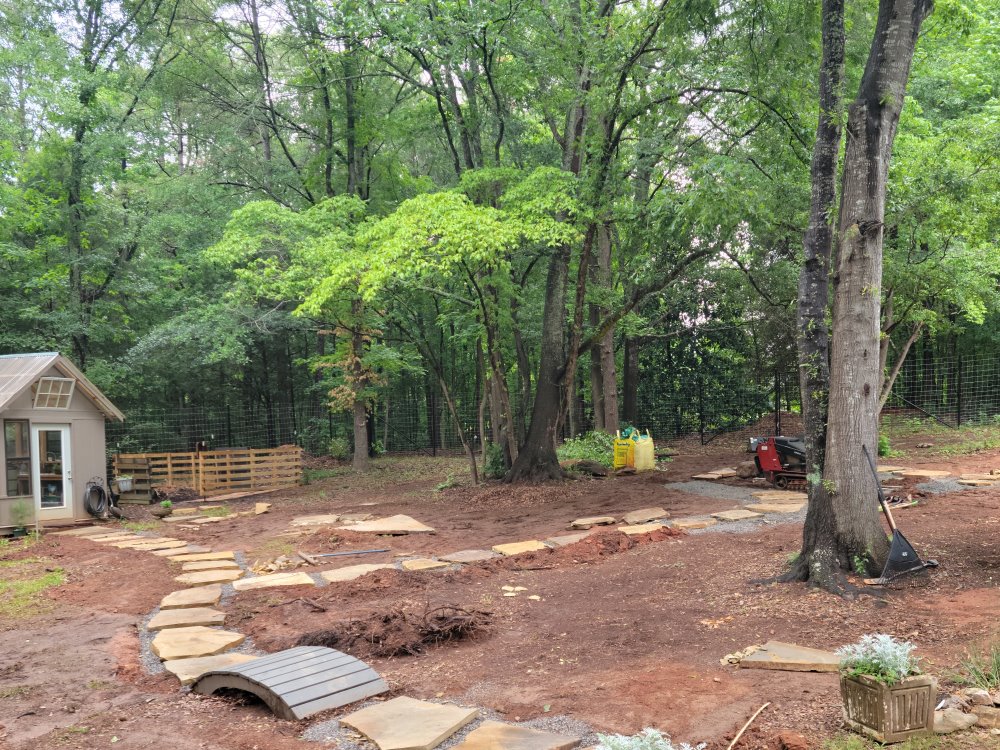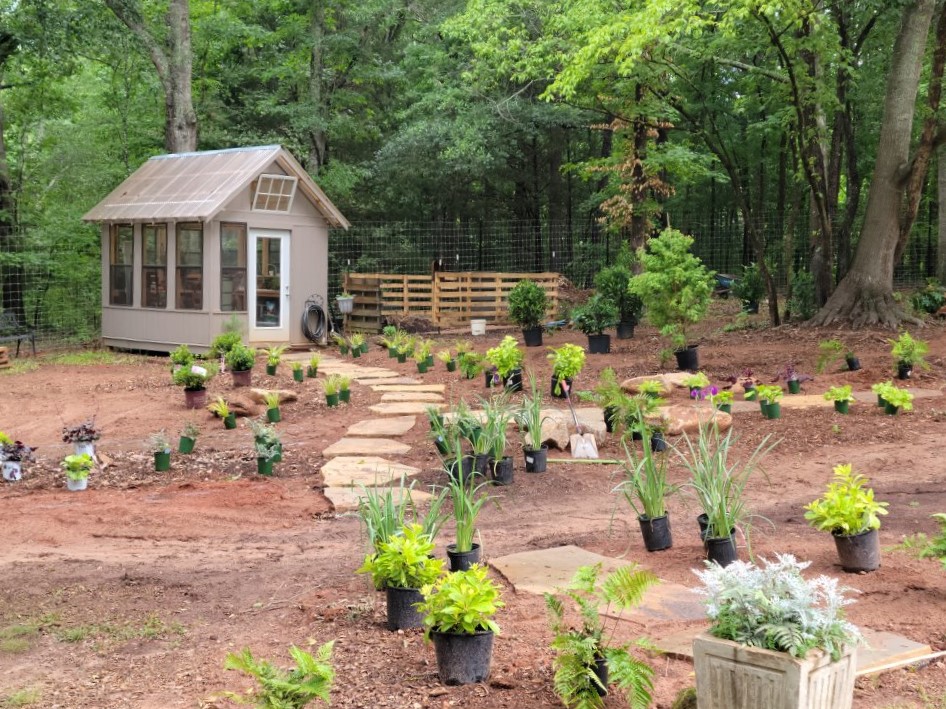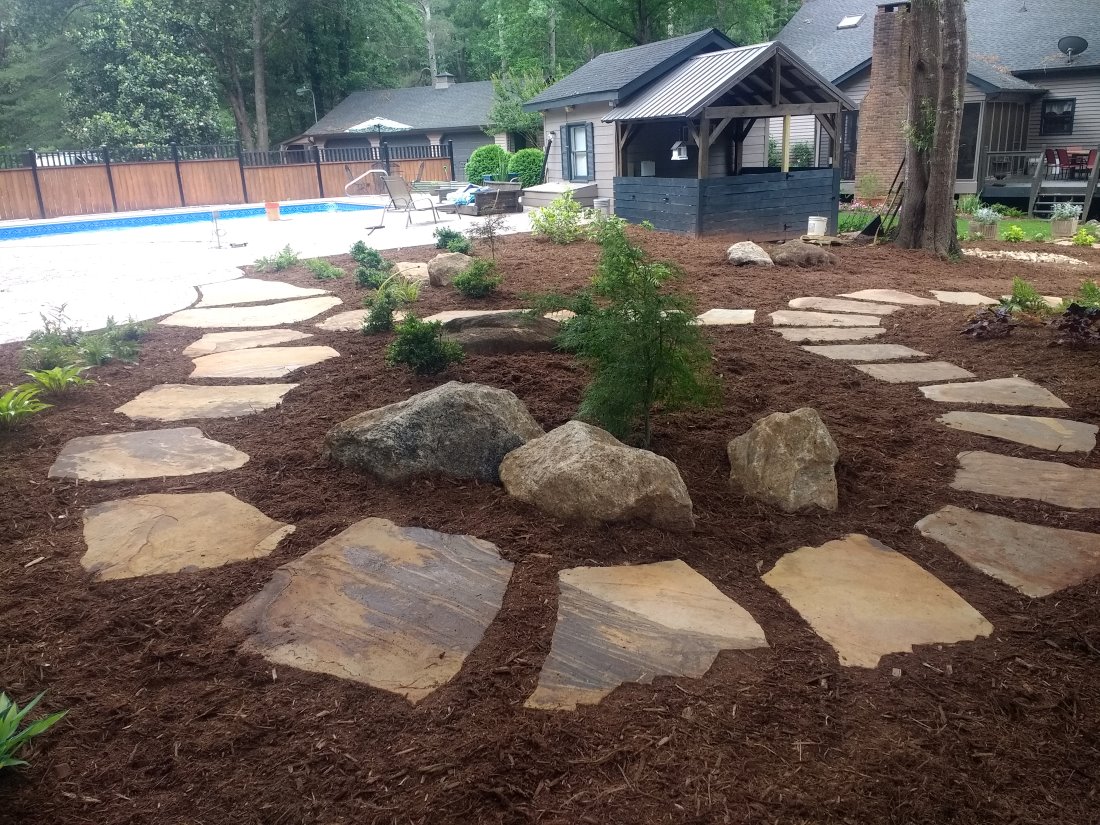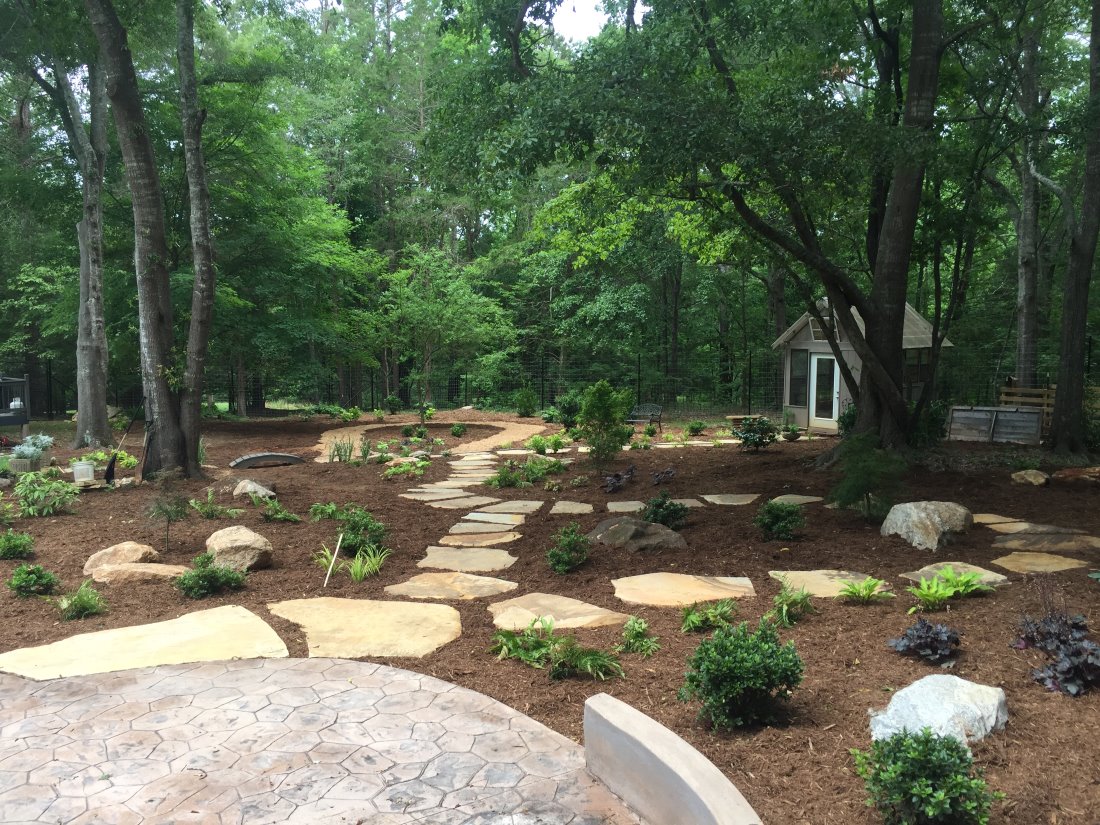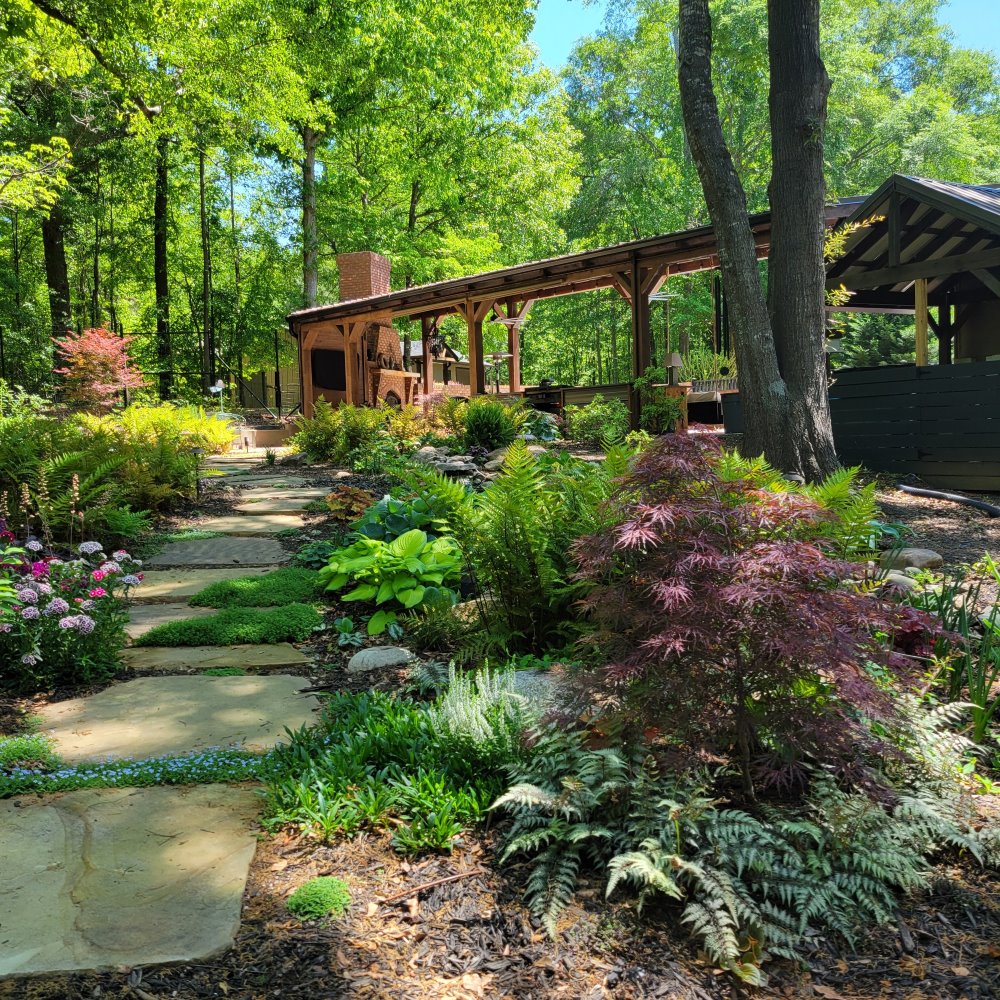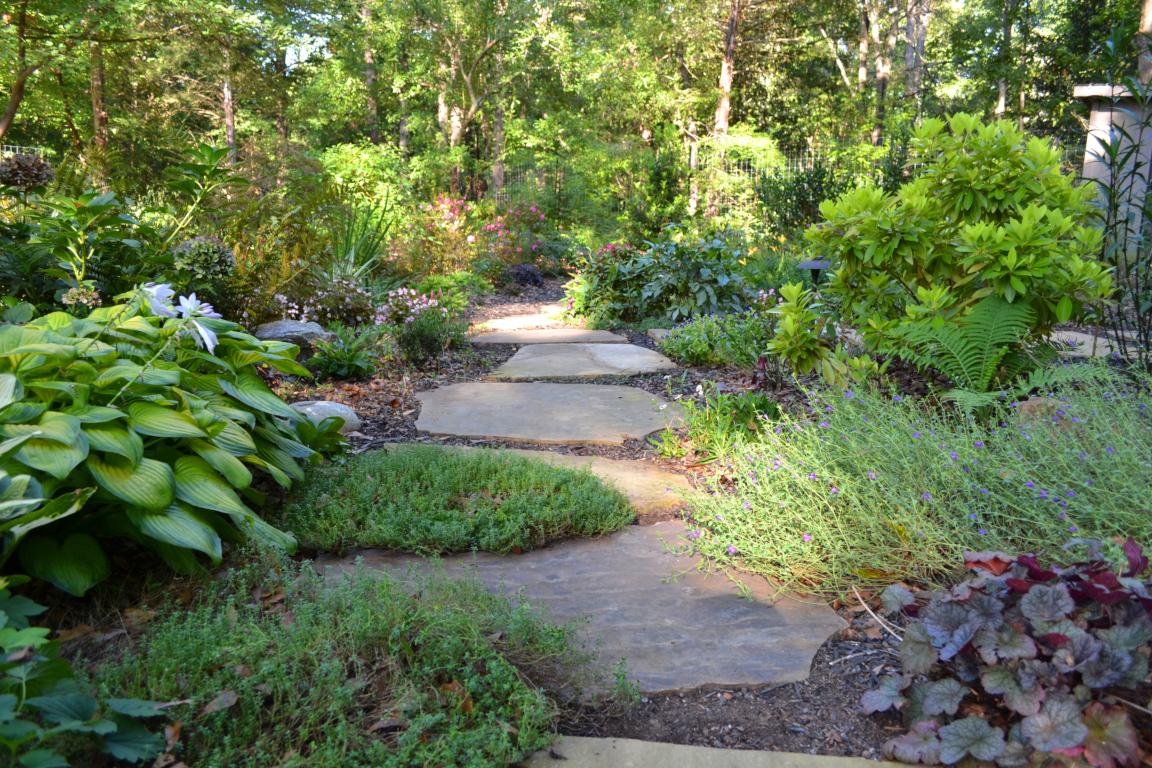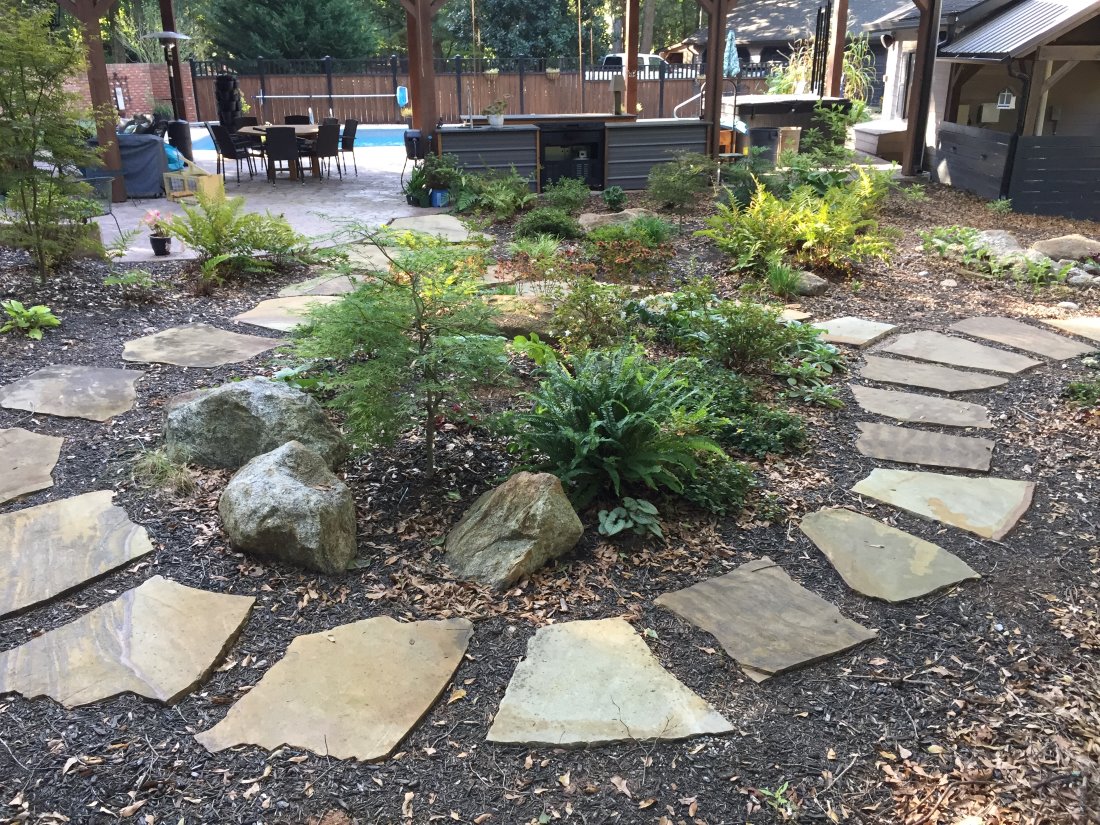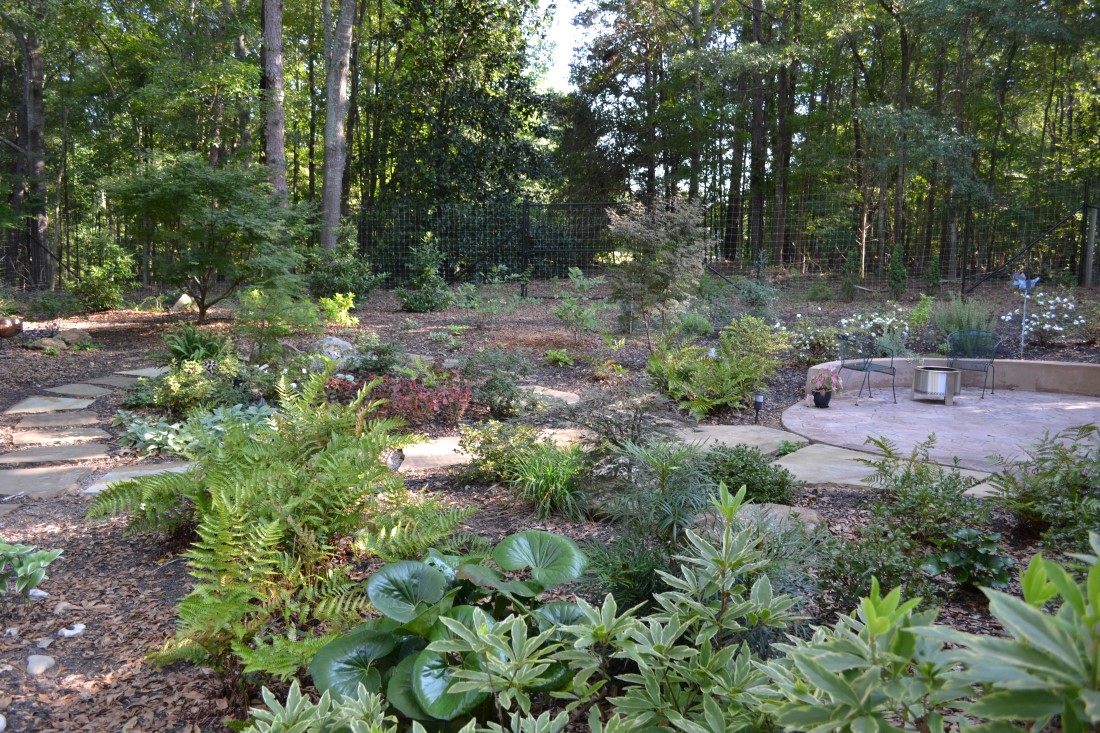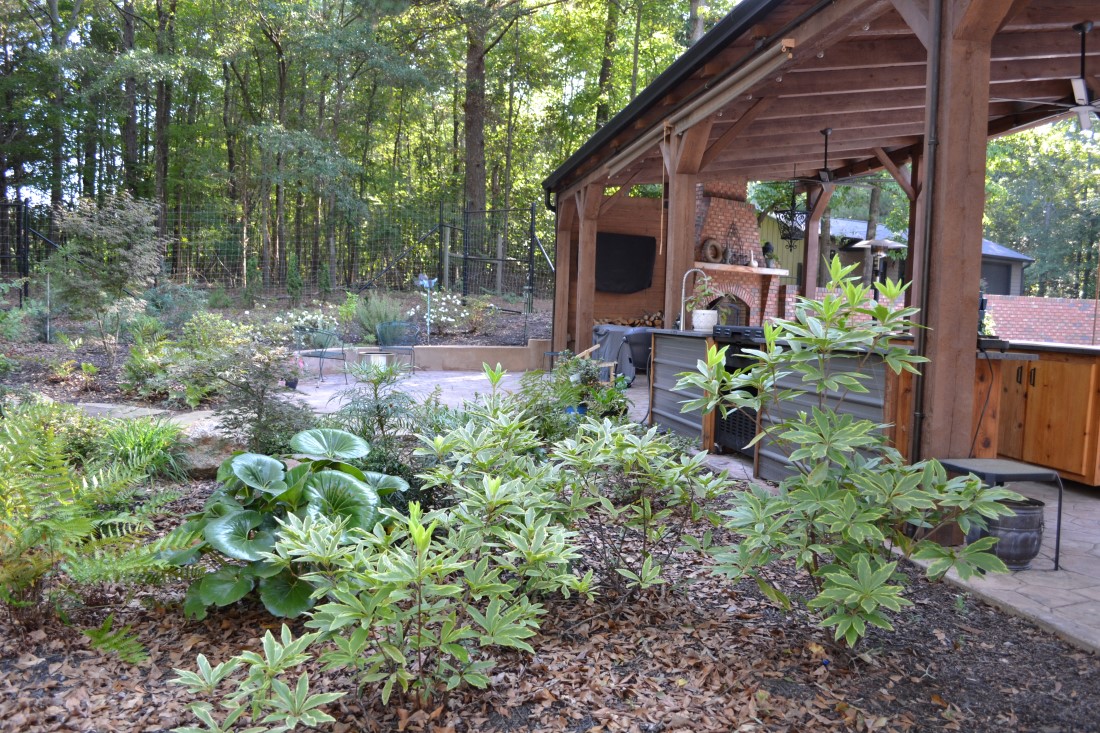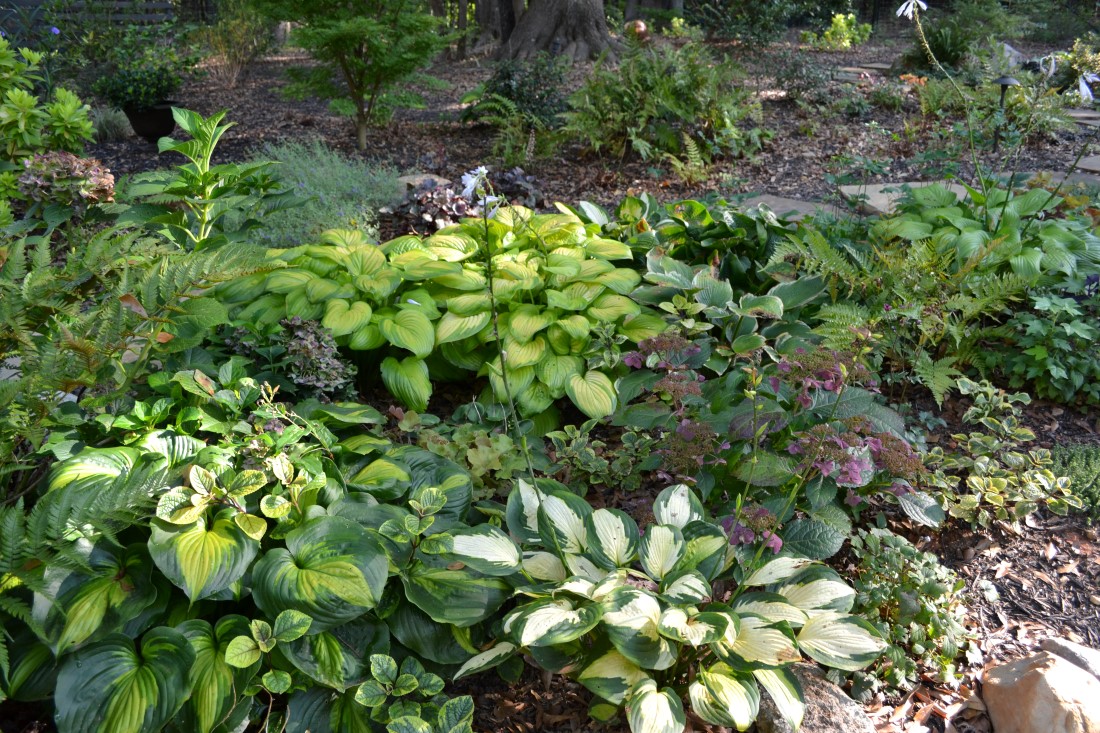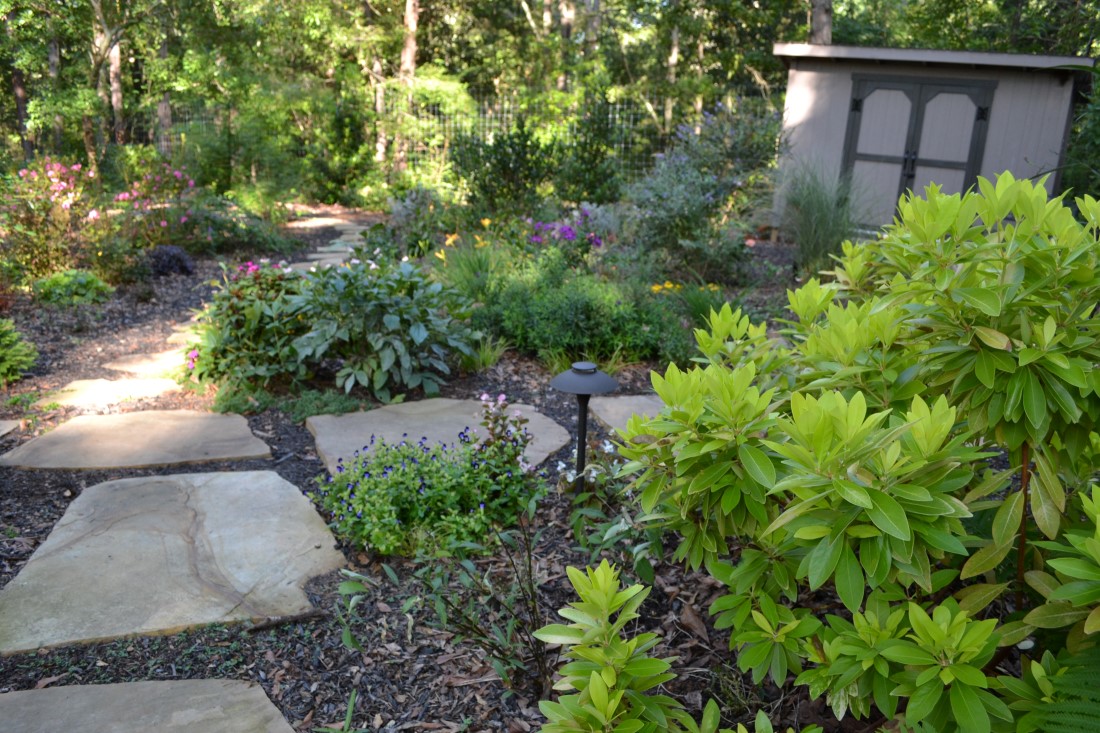Garden Design
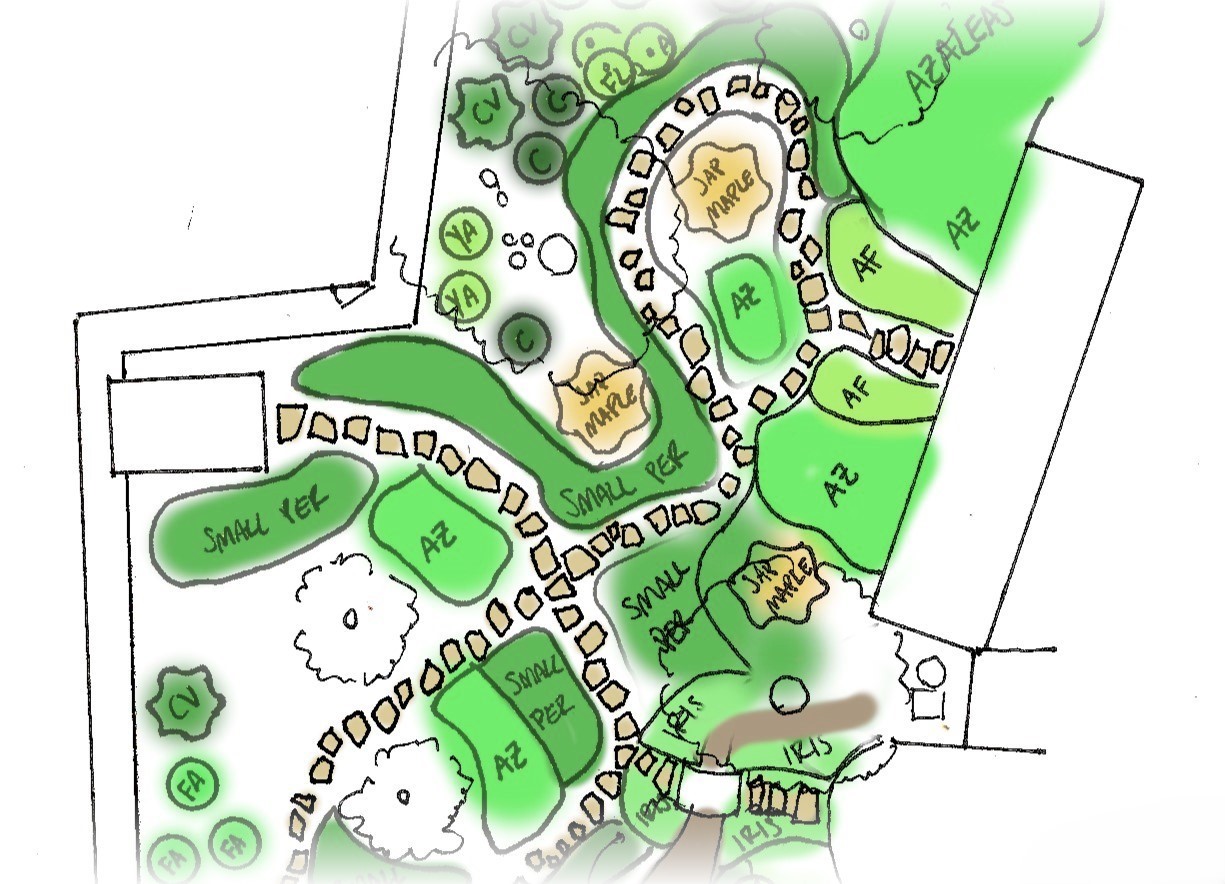

This project involved designing and installing a garden inspired by both Japanese gardens and tradtional gardens of the American southeast. Some elements of Japanese garden design that we incorporated are the use of decorative rocks, an asymmetrical layout, and a meandering stepping stone walking path. Also common to the layout of Japanese gardens is the principle of "hide and reveal": our design was laid out so that once the plants have grown, some features are deliberately obscured from view in order that they may be discovered while walking the path. Many of our plant choices reflect the commonalities between Japanese and Southern gardens, such as Japanese maples, camellias, azaleas and ferns. Part of the goal for this project was to create the basis for a garden that the homeowner could continue to add more plants to over the years, so we made sure to keep space in the design.
Drawing the design began with measuring and mapping the area for the garden, as well as taking sunlight measurements for different areas in order to appropriately select plants based on their sunlight requirements throughout the year. With this project, the goal for the design drawing was to make a general plan for the plantings and then to adjust them further when laying the plants out in the real space, so many of the smaller plants are not individually mapped out on the plan but are instead drawn as zones.
Pollinator Garden
One of the goals for the plant selection on this project was to choose a variety of plants that would attract and feed wildlife like birds and pollinating insects, as well as a range of plants that would have color at different times of the year from their flowers, foliage and bark. The homeowners had already installed a tall deer fence around a wide area of the property, so we didn't have to worry about this kind of wildlife eating all of the plants.
Stepping Stone Path
Japanese gardens often feature sand or gravel paths, but these materials can make for a very high maintenance path that requires frequent weeding, tends to collect and mix with organic debris, and often washes or migrates beyond the path boundaries. For a lower maintenance path we installed large stepping stones using brown and tan flagstone. The stones are compacted into a thin base of fine washed gravel with minimal base prep below this layer. This allows us to make sure the stones are stable and well supported, but also does not cause too much unneccessary damage to the many established tree root systems that covered most of the area of this garden. The stones are so large and heavy that they will stay stable over time despite the continued growth of tree roots underneath.
Plant and Irrigation Installation
After installing the path, we placed clusters of decorative rocks in several areas of the garden. We brought in more topsoil to spread in the planting beds for both ease of planting and future plant health. The plants were laid out in their final places, and after some fine tuning we got them all planted. We ran drip irrigation lines to the plants in several zones and finished by installing hardwood mulch, which stabilizes and insulates the soil, helps to retain soil moisture, and breaks down over time to add more healthy organic matter and plant nutrients to the top of the soil.
Pictured below, we revisited this job after several years of maturation to see how the garden has filled in since planting. The plants have grown substantially and the homeowner has been enjoying filling in more of the empty spaces with additional smaller plants.

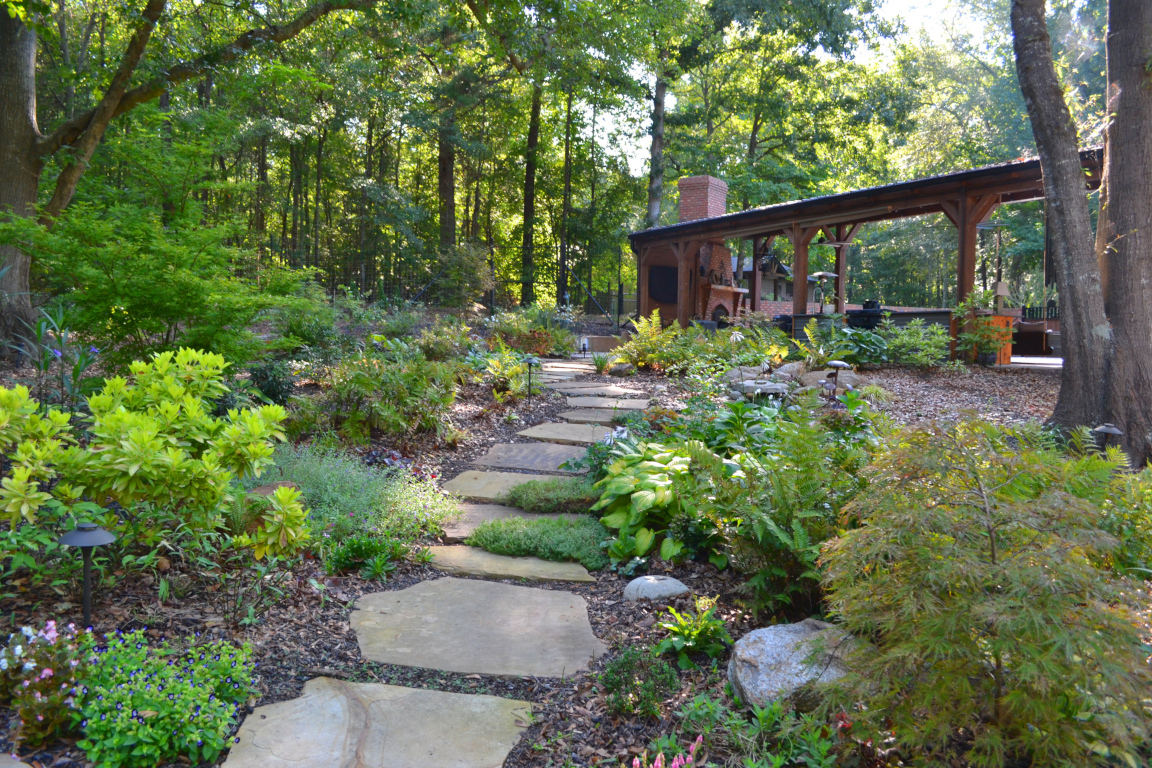

 This project involved designing and installing a garden inspired by both Japanese gardens and tradtional gardens of the American southeast. Some elements of Japanese garden design that we incorporated are the use of decorative rocks, an asymmetrical layout, and a meandering stepping stone walking path. Also common to the layout of Japanese gardens is the principle of "hide and reveal": our design was laid out so that once the plants have grown, some features are deliberately obscured from view in order that they may be discovered while walking the path. Many of our plant choices reflect the commonalities between Japanese and Southern gardens, such as Japanese maples, camellias, azaleas and ferns. Part of the goal for this project was to create the basis for a garden that the homeowner could continue to add more plants to over the years, so we made sure to keep space in the design.
This project involved designing and installing a garden inspired by both Japanese gardens and tradtional gardens of the American southeast. Some elements of Japanese garden design that we incorporated are the use of decorative rocks, an asymmetrical layout, and a meandering stepping stone walking path. Also common to the layout of Japanese gardens is the principle of "hide and reveal": our design was laid out so that once the plants have grown, some features are deliberately obscured from view in order that they may be discovered while walking the path. Many of our plant choices reflect the commonalities between Japanese and Southern gardens, such as Japanese maples, camellias, azaleas and ferns. Part of the goal for this project was to create the basis for a garden that the homeowner could continue to add more plants to over the years, so we made sure to keep space in the design.
